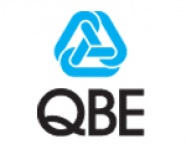An expert’s guide to the D&O policy renewal process

Authored by QBE Commercial Financial Lines Underwriter Lee Tomlin
There has been an upward trend in directors and officers (D&O) claims in recent years, with recent research from QBE revealing that 1 in 4 (23%) senior decision makers have had a claim made against them at least once in their capacity as a senior manager, while a third (32%) admit to concerns about a claim being made against them in the future.
As we mentioned in our previous blog, An expert’s guide to buying D&O insurance, this type of cover is increasingly crucial to have in place. But it is becoming an increasingly difficult risk to place in a challenging market. There are steps that you can take to make sure that your risk is attractive to insurers and achieving a fair price for your exposure.
We suggest the below steps to help you prepare for the renewal process.
Prepare in advance
Because of the increased claims activity underwriters are executing even greater scrutiny and due diligence than in the past. Make some time to speak to your broker beforehand to make sure you know the types of questions that your underwriter is likely to ask you. We recommend preparing information for your renewal submission in advance to ensure a smoother and easier renewal process.
Fully understand your risk
Before beginning the process, it is essential that you understand your D&O exposure and where claims could stem from. D&O risks are no longer dominated by accounting misrepresentations. Large D&O claims now eventuate from bribery and corruption, antitrust, acquisitions, major liability-type events like plane crashes, dam breaches, emissions issues, or data breaches.
As a result of these trends, many underwriters have taken a different approach to D&O. Operational risk is increasingly being scrutinised in the industry as a result of events-based litigation, increasing the importance of you demonstrating your understanding of the risks specific to your industry. For example:
- Mining: Make sure to explain the structure, location, inspection frequency of your tailings dams.
- Utilities: Health and safety, pollution risk, and wildfire management approaches will be areas of interest to your insurer.
- Pharmaceutical: Know your approach to product pricing, exposure to opioids, statins, patent expirations, drug pipeline and key milestones.
- Tech or social media company: Communicate how your company manages personal data risk and data breach response.
Examples of remedial action taken to minimise exposures, details of review and audit processes and details of your control environment relative to peer group issues can be great ways of differentiating your risk profile during the renewal process.
In light of D&O insurance policies operating on a claims made basis, underwriters will be keen to understand not just about the here and now, but historical information too.
Be transparent
Information about your claims, investigations and circumstances should be transparent and timely. Try to avoid last minute notifications and if you do need to make an eleventh-hour notification of a new matter, make sure your broker not only reports the matter to the insurers claims team, but also the underwriting team. New notifications could represent a material change in risk and may result in terms being withdrawn or amended, so get ahead of the game, make notifications as soon as possible and if it is at the last minute, be available to explain the situation and context. If you have existing claims, be prepared to disclose to insurers costs incurred so far and the anticipated litigation budget.
Tailor your information
Your insurer may find it easier to access and assess information such as financials in a consolidated document. Key for D&O insurers is information around share ownership, such as details of listings and type of shares and market cap for each listing. If you have American Depository Receipts (ADR) Level II or III, provide insurers with the ADRs market cap. This information is not always easily accessible so keeping it ready as part of your submission can save time during the negotiation process.
- Shares – If you are publicly listed, this may include share price performance and any material movements.
- Financials – Details of company funding, any need to raise funds by stock or bond offering, pension scheme liabilities and funding, and any change to revenue recognition policies.
- Culture – Ultimately, underwriters are underwriting the culture of the company, whether it is the safety culture, director remuneration and accountability, ethics and corporate social responsibility, and shareholder rights.
We have seen these steps make a difference in how these risks are underwritten and feedback from brokers highlights this approach as key to ensuring effective placement results. Liability risks for D&O appear to be becoming more unpredictable in nature, so making sure to present your risks in the right way to your insurer and working closely with them throughout the year has never been more important. Given the growing complexity of D&O claims, we believe that longevity of relationship with your key carriers combined with a common and consistent understanding of risks and coverage delivers significant benefits should you need to call on the policy to respond.
About QBE
QBE European Operations is part of QBE Insurance Group, one of the world’s leading international insurers and reinsurers and Standard & Poor’s A+ rated. Listed on the Australian Securities Exchange, QBE’s gross written premium for the year ended 31 December 2018 was US$13.7 billion.
As a business insurance specialist, QBE European Operations offers a range of insurance products from the standard suite of property, casualty and motor to the specialist financial lines, marine and energy. All are tailored to the individual needs of our small, medium and large client base.
We understand the crucial role that effective risk management plays in all organisations and work hard to understand our clients’ businesses so that we offer insurance solutions that meet their needs – from complex programmes to simpler e-trading solutions – and support them in minimising their risk exposures. Our expert risk management and rehabilitation practitioners focus on helping clients improve their risk management so that they may benefit from a reduction in claims frequency and costs.

